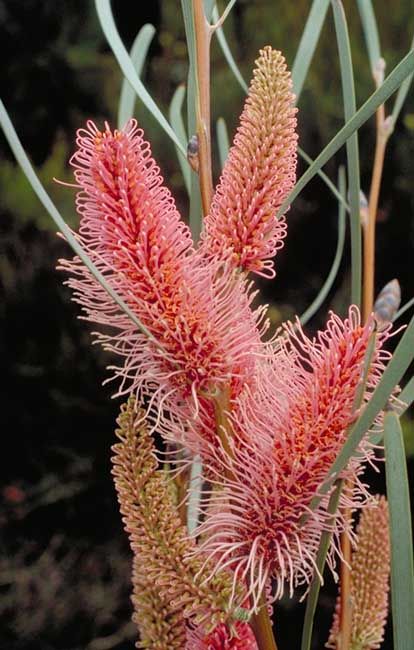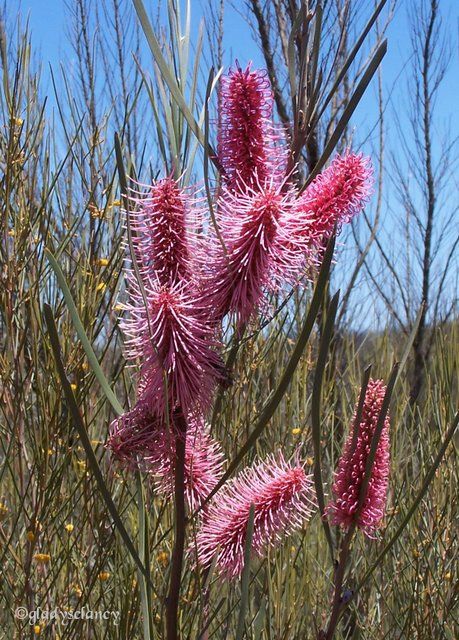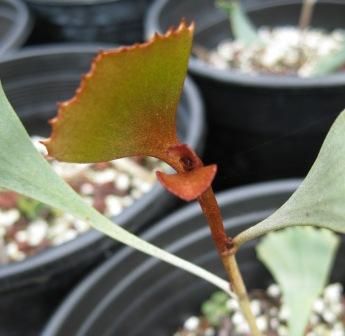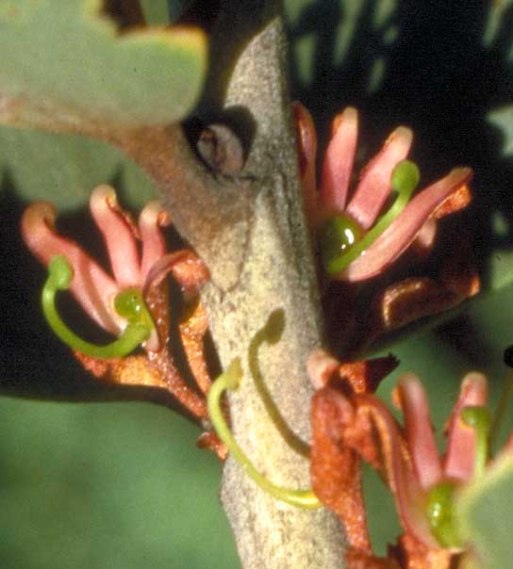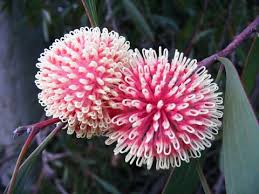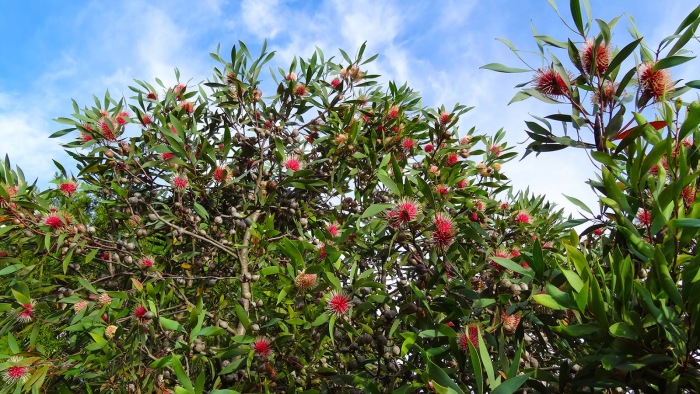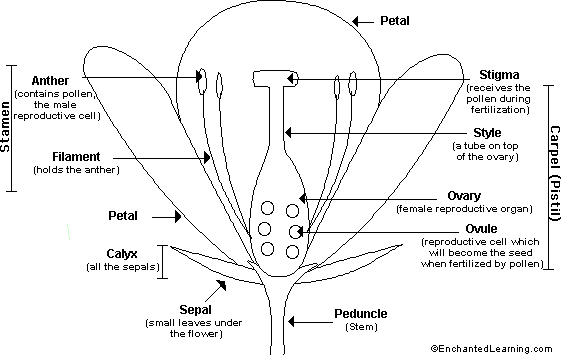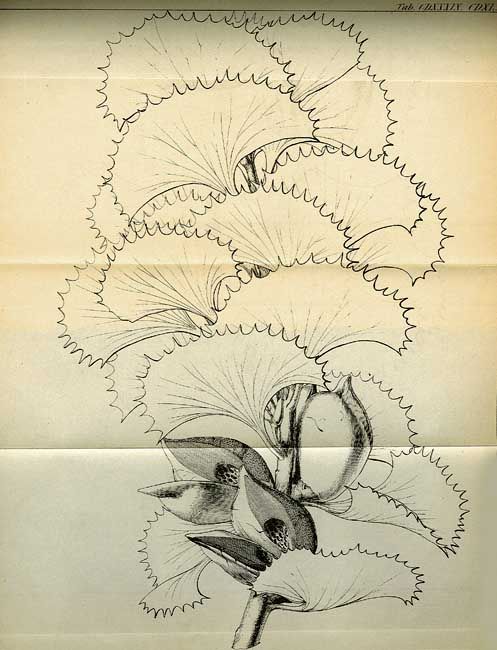The Hakea is a genus of 149 species of shrubs and small trees in the Proteaceae, native to Australia. They are found throughout the country, with the highest species diversity being found in the south west of Western Australia. With 149 options, it was certainly hard to choose the right Hakea for me but in the end, I decided to plant three different varieties within the Wildling Plot and they are all quite different. The ones that I decided on are Hakea Coriacea or Pink Spike Hakea, The Hakea Brownii or Fan Leaf Hakea and the Hakea Laurina or Pin Cushion Hakea as you can see below.
- Hakea Coriacea or Pink Spike Hakea
Grows: 4m x2m; Flowers: Jul- Dec Requires well- drained sandy soil. Water well to establish but then is relatively hardy. Can tolerate frosts as well as arid conditions.
- Hakea Brownii ‘ Fan Leaf Hakea’
Grows: 5- 8ft. Also known as the coastal wooly bush. Likes hot, dry sites in grey or white sand and is very hardy. I will be using the Hakea Brownii as a foliage plant only as the unique, fanning leaves are striking and are quite large 40- 80 mm long and as many wide each. The flower for this variety of Hakea is slightly dull and would not make a great arranging flower.
- Hakea Brownii flower.
- Hakea Laurina ‘Pincushion Hakea’
Grows: As a shrub to 5 metres. Also known as the Emu Bush. Habitat. Amongst low trees, or low (sclerophyll) shrubland; in sand, or clay (limestone, sandy loam). prefers a sunny position though can tolerate both shade and frost however the ever-green shrub is less robust and less flowers will occur in these conditions.
I think Hakea make a beautiful display flower as they are so fascinating to look at and provide a pink spectacle when the hedges are in full bloom. When i was little, i remember with fondness, one day trip with my parents down the coast, we walked along the sandy foreshores of Goolwa in South Australia and visited one of my dad’s friends, Karine. We picking Pin Cushion Hakea as we strolled down to the beach. Karine was a biologist and as we walked together, she explained to me how the birds and the bees worked… literally! She talked about the sexuality of plants through the pollination and reproduction within the flowers of trees and shrubs while bouncing a Pin Cushion Hakea in the palm of her hand. I thought she was so cool. I was only five or six at the time but i still remember that day vividly. Karine had taught me to appreciate not just the beauty of the flowers around me but the reproductive function and sexiness of the inner workings of flowers too. Whenever i think of the carpels and stamens within a flower, I always imagine the orgy that is going on within the pin cushion Hakea. It is one sexy flower.
- This is a diagram of the basic anatomy of a flower…. just for kicks.
I knew I had to plant the pin cushion Hakea as one of the Wildling flowers. It has long been one of my favourite native flowers. I have seen a few varieties of this Hakea around the Castlemaine area, particularly in Maldon where there is very sandy conditions since the mines were filled in. I hope to have some success with this variety on the plot as their are sections of the plot which are quite sandy. The other two varieties of Hakea are not as common as the Pin Cushion and so i have yet to see any large varieties of them in this area but am excited to see how they go. They all appear to be hardy, draught tolerant plants which was the main element of their appeal to me and though they do tolerate high winds and frosty conditions once established, it is recommended to keep them covered during the winter nights until they grow to around one meter as they prefer a sheltered upbringing.

